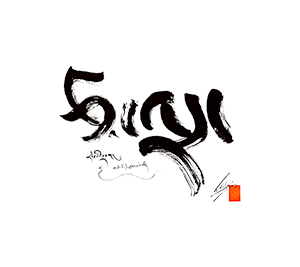| |ArticleSummary=Interest in the ''Vajrasamādhi'' has been roused by a paper of Lin Tai-yün published in I932<ref>Hayashi Taiun: "Bodaidaruma-den no kenkyū", ''Shūkyō kenkyū'' IX.iii, Tokyo, May 1932, pp. 62-76.</ref>. In the ''Vajrasamādhi'' Lin had found a quotation from what is generally supposed to be a Bodhidharma text<ref>(Chinese text unavailable) A number of versions exist. See below.</ref>, and thus the problem was set of the relation between these bits of material and the bearing which an investigation into this matter might have on the riddle of Bodhidharma. Suzuki Daisetsu has dealt with this problem in 1936<ref>''Daruma no zen-bo to shisō oyobi sono ta'', Tokyo 1936 (Suzuki II), a complement to the same author's ''Shōshitsu isho'', Osaka 1935 (Suzuki I).</ref>, Paul Demiéville in 1952<ref>''Le Concile de Lhasa'' (Bibl. de l'Institut des Hautes Études Chinoises vol. VII), Paris 1952, p. 54 n. 2 (Demiéville).</ref> and Dr. Mizuno in I955<ref>Mizuno Kōgen: "On the Relation between Bodhidharma's ''Two Entrances and Four Practices and the Vairasamādhi Sūtra''" (Bodaidaruma no ninyū shigyō setsu to ''Kongōzanmai-kyō'', ''Indogaku Bukkyōgaku kenkyū'', III.2, Tokyo, March 1955, pp. 621-626 (Mizuno I). Same: same title, ''Komazawa daigaku kenkyū kiyō'' No. I3, Tokyo 1955 (Mizuno II). Cf. also Ono Hōdō: ''Daijō kaikyō no kenkyū'', Tokyo 1954, p. I25/6.</ref>. I shall in this note confine myself to the text itself.<br> The texts in question are:<br> | | |ArticleSummary=Interest in the ''Vajrasamādhi'' has been roused by a paper of Lin Tai-yün published in 1932<ref>Hayashi Taiun: "Bodaidaruma-den no kenkyū", ''Shūkyō kenkyū'' IX.iii, Tokyo, May 1932, pp. 62-76.</ref>. In the ''Vajrasamādhi'' Lin had found a quotation from what is generally supposed to be a Bodhidharma text<ref>(Chinese text unavailable) A number of versions exist. See below.</ref>, and thus the problem was set of the relation between these bits of material and the bearing which an investigation into this matter might have on the riddle of Bodhidharma. Suzuki Daisetsu has dealt with this problem in 1936<ref>''Daruma no zen-bo to shisō oyobi sono ta'', Tokyo 1936 (Suzuki II), a complement to the same author's ''Shōshitsu isho'', Osaka 1935 (Suzuki I).</ref>, Paul Demiéville in 1952<ref>''Le Concile de Lhasa'' (Bibl. de l'Institut des Hautes Études Chinoises vol. VII), Paris 1952, p. 54 n. 2 (Demiéville).</ref> and Dr. Mizuno in I955<ref>Mizuno Kōgen: "On the Relation between Bodhidharma's ''Two Entrances and Four Practices and the Vairasamādhi Sūtra''" (Bodaidaruma no ninyū shigyō setsu to ''Kongōzanmai-kyō'', ''Indogaku Bukkyōgaku kenkyū'', III.2, Tokyo, March 1955, pp. 621-626 (Mizuno I). Same: same title, ''Komazawa daigaku kenkyū kiyō'' No. I3, Tokyo 1955 (Mizuno II). Cf. also Ono Hōdō: ''Daijō kaikyō no kenkyū'', Tokyo 1954, p. I25/6.</ref>. I shall in this note confine myself to the text itself.<br> The texts in question are:<br> |
| a. The ''Chin-kang san-mei ching lun'', T. 1730 vol. 37 composed by Yüan-hsiao, a Korean, in the second half of the seventh century. This is the only commentary which I have used for this paper in order to correct the original. A very good modern edition has been published by Chou Shu-chia in Peking 1936.<br> | | a. The ''Chin-kang san-mei ching lun'', T. 1730 vol. 37 composed by Yüan-hsiao, a Korean, in the second half of the seventh century. This is the only commentary which I have used for this paper in order to correct the original. A very good modern edition has been published by Chou Shu-chia in Peking 1936.<br> |
